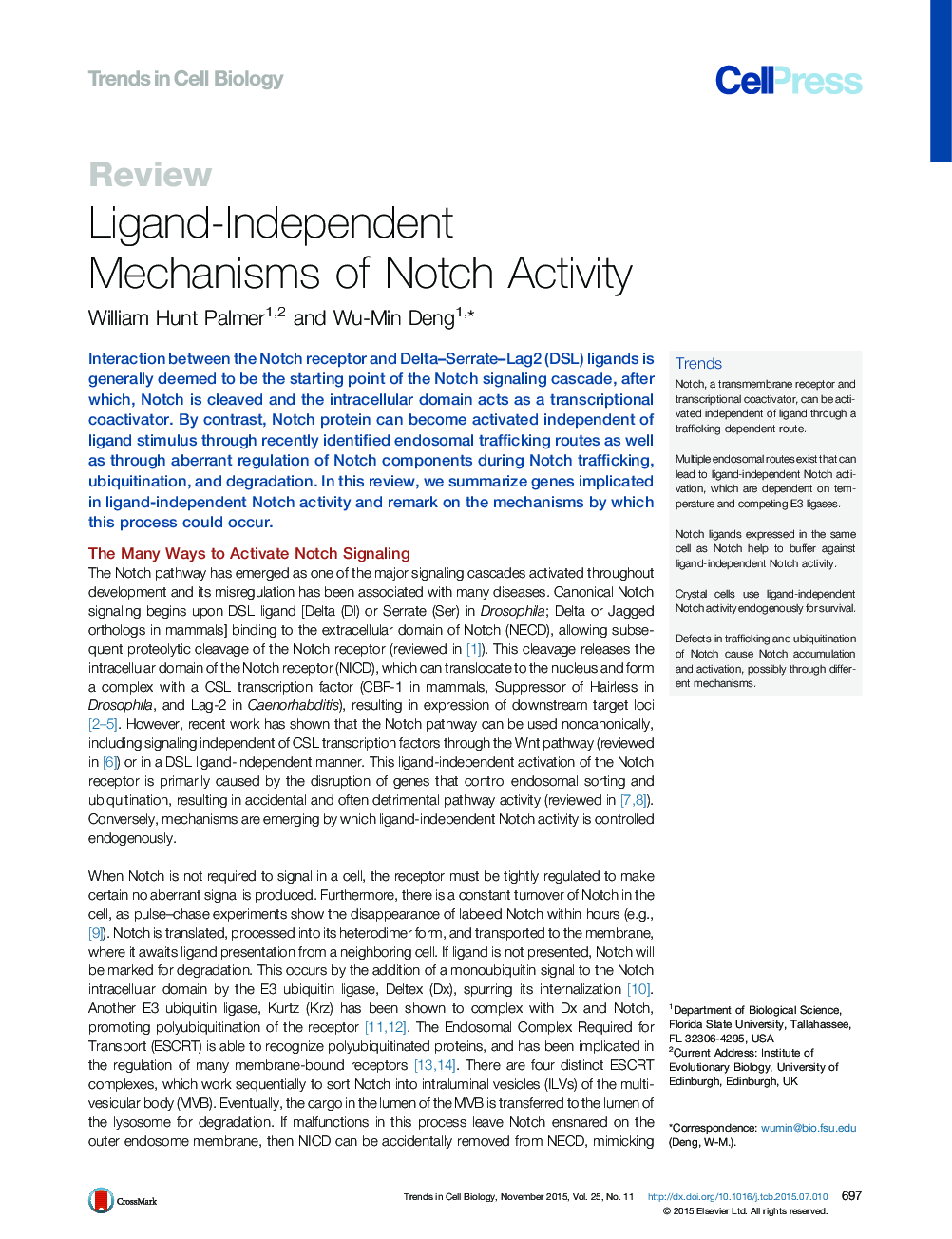| Article ID | Journal | Published Year | Pages | File Type |
|---|---|---|---|---|
| 2204285 | Trends in Cell Biology | 2015 | 11 Pages |
Interaction between the Notch receptor and Delta–Serrate–Lag2 (DSL) ligands is generally deemed to be the starting point of the Notch signaling cascade, after which, Notch is cleaved and the intracellular domain acts as a transcriptional coactivator. By contrast, Notch protein can become activated independent of ligand stimulus through recently identified endosomal trafficking routes as well as through aberrant regulation of Notch components during Notch trafficking, ubiquitination, and degradation. In this review, we summarize genes implicated in ligand-independent Notch activity and remark on the mechanisms by which this process could occur.
TrendsNotch, a transmembrane receptor and transcriptional coactivator, can be activated independent of ligand through a trafficking-dependent route.Multiple endosomal routes exist that can lead to ligand-independent Notch activation, which are dependent on temperature and competing E3 ligases.Notch ligands expressed in the same cell as Notch help to buffer against ligand-independent Notch activity.Crystal cells use ligand-independent Notch activity endogenously for survival.Defects in trafficking and ubiquitination of Notch cause Notch accumulation and activation, possibly through different mechanisms.
